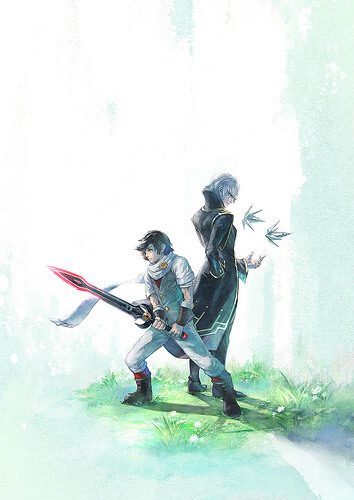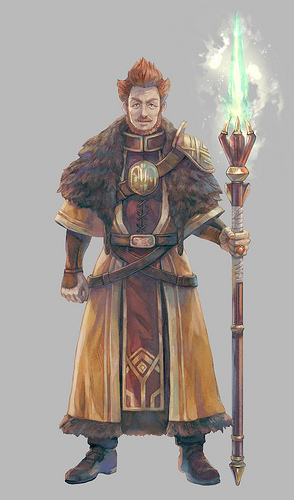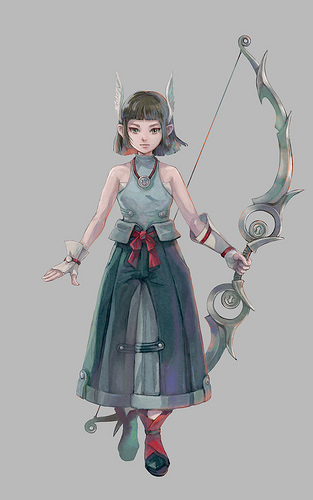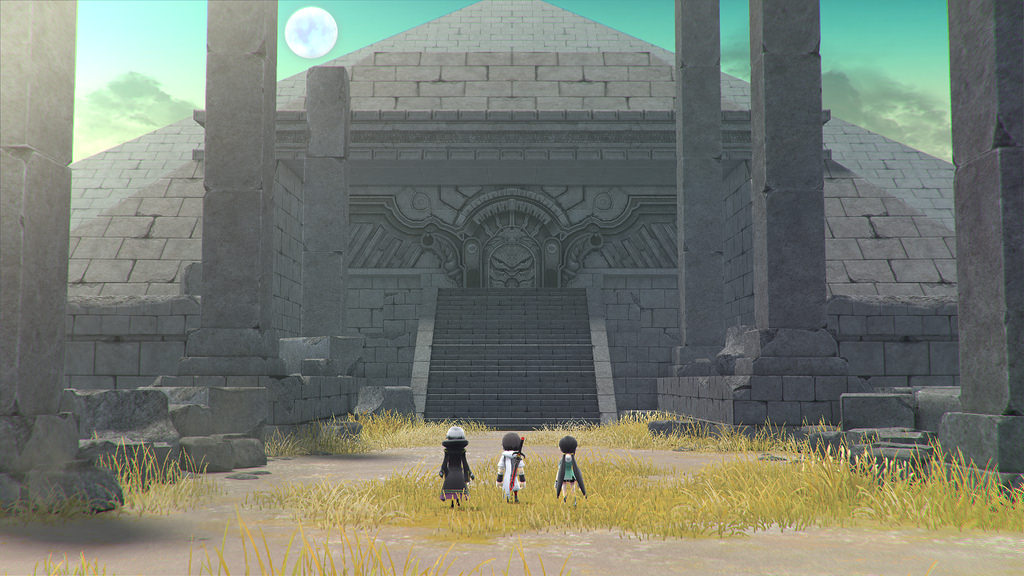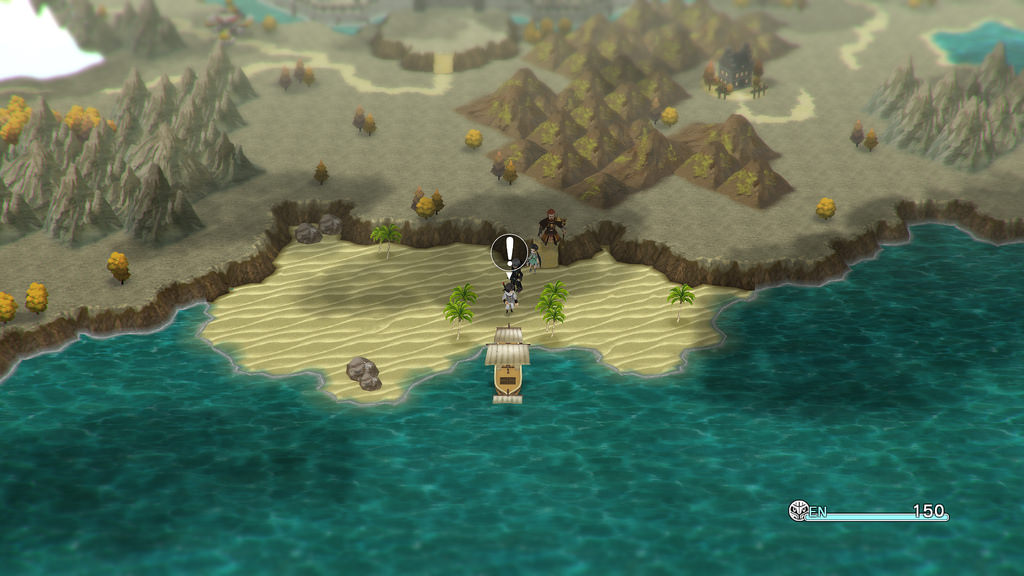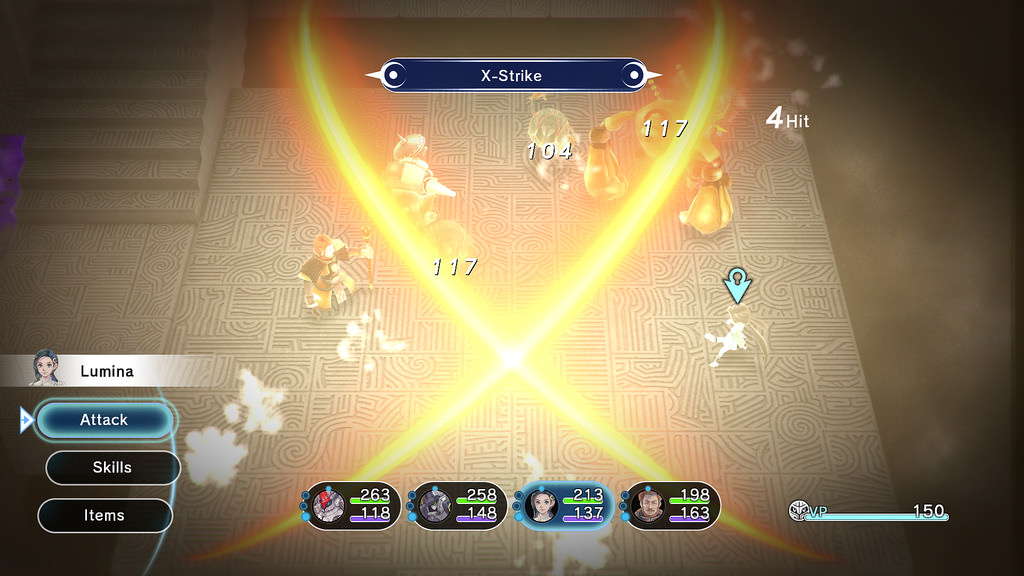What if your loved ones suddenly vanished? What if you realized your most precious memories were slowly slipping away?
Such is the premise of Lost Sphear, the second project from Square Enix’s Tokyo RPG Factory, the studio that hopes its latest genre entry will also stir the memories of those of us reared on 90’s RPGs.
When Square Enix unveiled the studio at E3 back in 2015, its unspoken objective seemed clear: to create games that captured the spirit of the publisher’s earliest works – Final Fantasy, Chrono Trigger, Secret of Mana. The games that made fans fall in love with Square in the first place. It’s a design philosophy that shaped the studio’s debut, I Am Setsuna, as well as this new genre entry, which will also stir the memories of those of us reared on 90’s RPGs.
If the brief hands-on I had at a recent event is representative of the full game, then the studio looks set to achieve that goal; I count myself as one of those players, and the game’s adherence to classic genre values strongly resonated with me during the play session.
But even if you’ve never played any of the entries from that era, you may find the studio’s love letter to the past – turn-based gameplay, charming cast, melancholic story, vibrant hand-painted art and piano-based music – something to treasure.
We had the chance to ask Lost Sphear’s Director, Atsushi Hashimoto, a few questions about this new title and the vision behind it.
What makes this era so important to you and what do you feel it offers to an audience that they might not find in other games?
Hashimoto: “At Tokyo RPG Factory we want to make the kind of games that will not lose their lustre after ten years or more, and the types of games that remain in our own memories like those RPGs that we played in the 90’s. The fact that these games very much continue to influence us is a big reason.
“In the RPGs of the 90’s, there was a lot more room for player interpretation about how the characters they were playing actually felt during their adventures. You don’t really see many games like that nowadays, so we want people to be able to enjoy filling in the gaps with their imagination in our games.”
It’s been a long time since this classic type of games was popular – how have the vast improvements in technology allowed you to develop the genre? Has it allowed you to do things that might not have been possible in the PS1/PS2 era?
Hashimoto: ”Thanks to the advances in technology, we were able to realize the unique graphical depictions in all the game’s detailed backgrounds, with their special hand-drawn feel. We chose this hand-drawn style for the visuals of Lost Sphear, but nowadays we really have a lot more options to choose from for the graphics, so there are many more ways we can stimulate the imagination of players. I think that was something that was difficult to do in the PlayStation and PlayStation 2 era.”
What are the biggest challenges with trying to bring back a classic genre and re-imagining it for a new audience that may be more familiar with contemporary styles? When you’re creating these games, do you think more about creating something for the players who fondly remember these games or are you targeting players who missed out on these sorts of games in the past?
Hashimoto: ”We try to be aware of what the older players who played all those classic RPGs back in the 90’s are after, while at the same time also want younger players to play our games too, so it takes quite a while to find that perfect sweet spot. It is very hard trying to decide what needs changing and what cannot be changed. With I Am Setsuna, there was a bit of a gap between our vision about the game and those of the actual players – a few people were surprised by the absence of inns for example – so we took a lot of the player feedback from Setsuna into account when developing Lost Sphear.”
Is Lost Sphear an entirely new story or can players expect to find hints from I Am Setsuna?
Hashimoto: ”The story of Lost Sphear is completely unrelated to that of I Am Setsuna and has been developed as a completely new game in its own right, so you don’t have to have played I Am Setsuna in order to enjoy it 100%. Having said that, some of the terminology used in I Am Setsuna is carried over into Lost Sphear, so those who have played I Am Setsuna may be able to read something a little deeper into it. You are free to let your imaginations run wild about the two games of course, and I would be delighted to see people doing so!”
A lot of people really related to the characters in I Am Setsuna – were you tempted to make a direct sequel? What informed the decision to start with a new story?
Hashimoto: ”We considered the story in I Am Setsuna to be complete in itself, so we didn’t want to try to fix something that was not broken by doing a sequel. Accordingly, we decided from the first planning stages to carry over some of the same concepts from Setsuna while developing a completely new RPG in its own right.”
Can you tell us a little bit about how Lost Sphear’s battle system differs from the one in I Am Setsuna? What was the gameplay focus when creating Lost Sphear?
Hashimoto: ”The easiest change to understand is how you can now move about freely during battle. There were many people who played I Am Setsuna who said it would have been nice to be able to do that, so we altered the system based on their feedback. In addition, another new element unique to Lost Sphear is that you can now ride in Vulcosuit exo-armour and use an array of special ‘Paradigm Drive’ attacks that have different effects for each character.
“The core of the gameplay in Lost Sphear is linked to the key word of “memory” that we set down to inform the whole game. The idea of “memory” plays a very important role in the events of Lost Sphear’s story, but it also runs throughout the gameplay itself. You can use memory items on the world map to create artefacts and apply various special effects to battles and some other aspects of the game. I think these mechanics will give players great experiences that you cannot get in other games.”
I Am Setsuna had a very distinctive piano based soundtrack that received a lot of praise. Can you tell us a little bit about Lost Sphear’s soundtrack?
Hashimoto: ”The music for I Am Setsuna was very well received, so we decided right from the start that we would go for largely piano-based music for Lost Sphear as well. However, Lost Sphear has a lot more variation in the field locations you can visit in comparison with I Am Setsuna, so we eventually settled on a concept of having each track done with a piano and one other instrument for each piece. In this way we managed to carry over what made Setsuna’s music so good, while also taking on the challenge of creating something new as well.”
What’s the one thing you’d really like to achieve with Lost Sphear that you didn’t get a chance to do in I Am Setsuna?
Hashimoto: ”It is something quite small, but I would have to say including inns. It was not just that of course, and with I Am Setsuna we set the level of civilisation and technological development pretty low and made it so that there were very few fellow travellers in that world. This led us to not include a number of features that are very standard in most RPGs. With Lost Sphear, we put many of those classic “must have” RPG elements back and hope to see knowing smiles from the people who played the RPGs of the 90’s.”
Last question, if you had a chance to ‘remake’ or ‘create a new chapter for’ one classic franchise, which would it be?
Hashimoto: “The Final Fantasy, Dragon Quest and SaGa series that have all had a huge influence on me are all still going, so if you exclude those then it becomes a very difficult question indeed, but I would probably have to say Xenogears.”
Website: LINK

